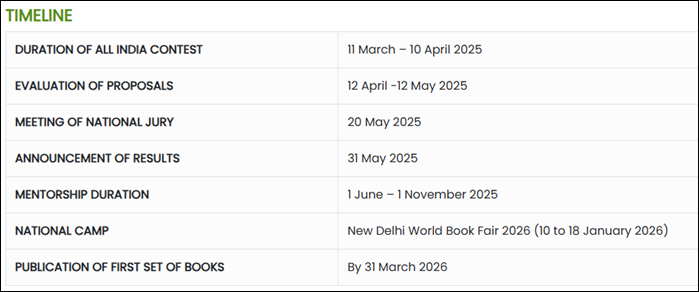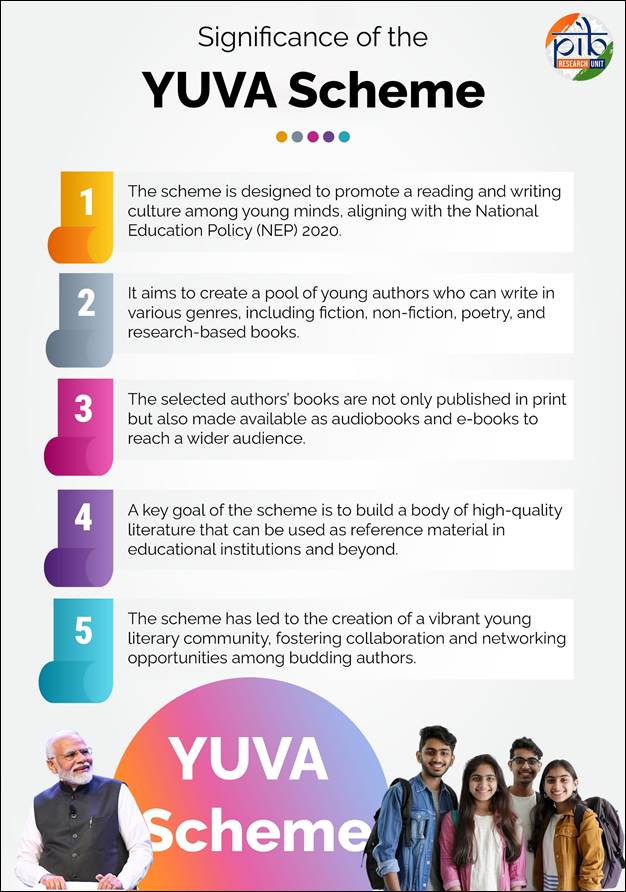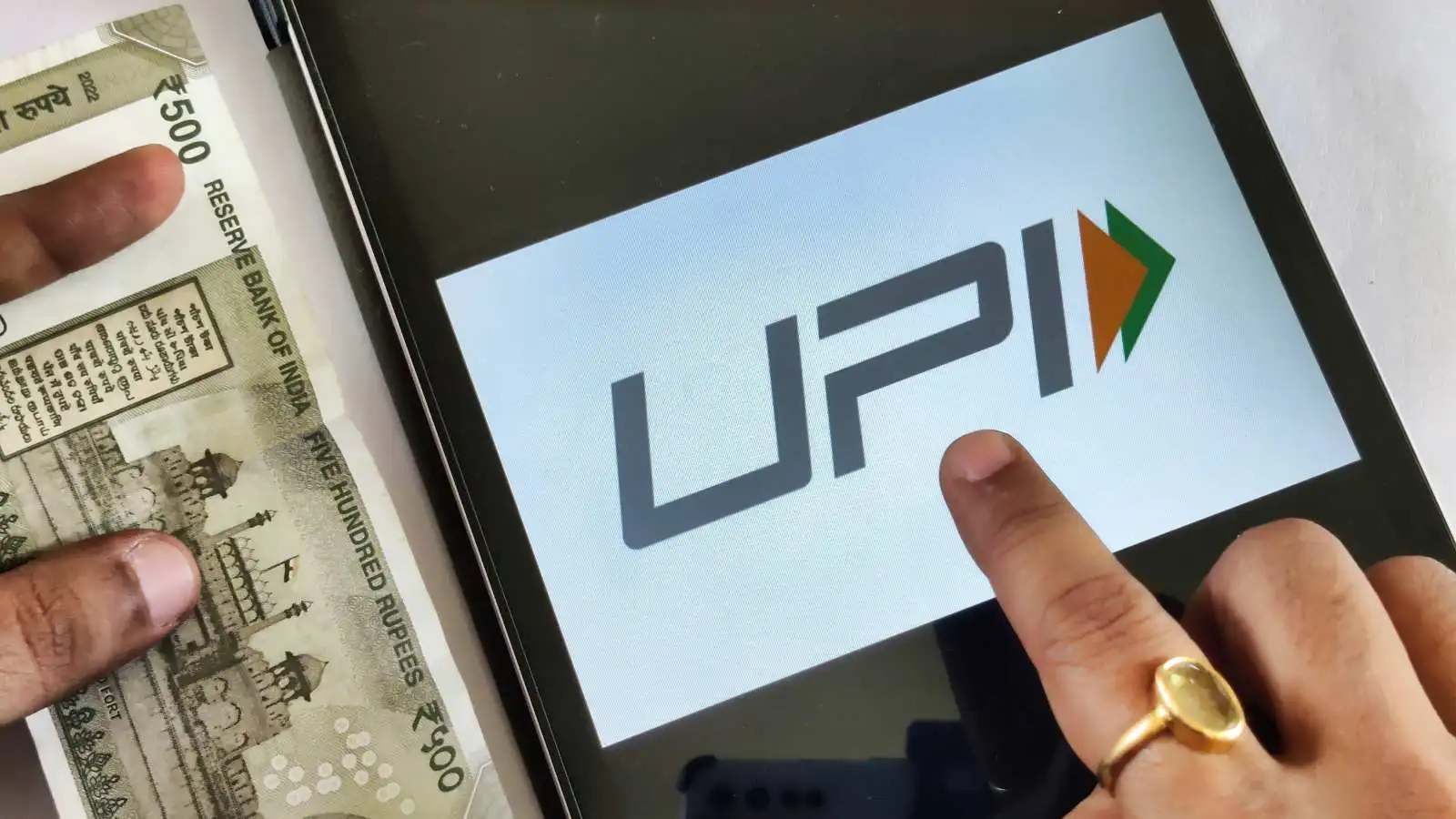यहाँ YUVA - प्रधानमंत्री युवा लेखक मेंटरशिप योजना पर 10,000 शब्दों का विस्तृत लेख तैयार किया जा रहा है। इस लेख में योजना की पृष्ठभूमि, उद्देश्य, कार्यप्रणाली, लाभ, प्रभाव, सफलताएँ, चुनौतियाँ और भविष्य की संभावनाएँ शामिल होंगी।
प्रस्तावना
भारत एक युवा राष्ट्र है, जहाँ युवाओं की शक्ति और रचनात्मकता को प्रोत्साहित करने के लिए सरकार विभिन्न योजनाएँ चलाती रही है। प्रधानमंत्री युवा लेखक मेंटरशिप योजना (YUVA - Young, Upcoming, and Versatile Authors) एक ऐसी ही अनूठी पहल है, जिसका उद्देश्य नवोदित लेखकों को मार्गदर्शन और समर्थन प्रदान करना है। यह योजना भारत की समृद्ध साहित्यिक परंपरा को आगे बढ़ाने और भारतीय भाषाओं में गुणवत्ता साहित्य का निर्माण करने का एक महत्वपूर्ण प्रयास है।
योजना की पृष्ठभूमि
YUVA योजना को नेशनल बुक ट्रस्ट (NBT), इंडिया के माध्यम से शिक्षा मंत्रालय, भारत सरकार द्वारा 2021 में शुरू किया गया था। इसका मुख्य उद्देश्य युवा लेखकों की प्रतिभा को निखारना और उन्हें राष्ट्रीय एवं अंतर्राष्ट्रीय स्तर पर स्थापित करना है। यह योजना 75 युवा लेखकों को उनकी रचनात्मकता को बढ़ावा देने और उन्हें वित्तीय सहायता एवं प्रशिक्षण देने के लिए चुना जाता है।
इस योजना की शुरुआत आजादी का अमृत महोत्सव के हिस्से के रूप में की गई थी, जिसमें स्वतंत्रता संग्राम, स्वतंत्रता सेनानियों, अनसुनी कहानियों और राष्ट्र निर्माण में योगदान जैसे विषयों को बढ़ावा देने पर जोर दिया गया। इस योजना के तहत चुने गए युवा लेखकों को उनकी पुस्तकों को प्रकाशित करने और व्यापक पाठकों तक पहुँचाने का अवसर मिलता है।
अध्याय 1: YUVA योजना का उद्देश्य और महत्व
1.1 योजना के मुख्य उद्देश्य
YUVA योजना के निम्नलिखित प्रमुख उद्देश्य हैं:
- युवा लेखकों को मंच प्रदान करना: युवा भारतीय लेखकों को उनके विचारों और कहानियों को साझा करने का अवसर देना।
- भारतीय साहित्य को बढ़ावा देना: भारतीय भाषाओं में गुणवत्तापूर्ण साहित्य तैयार करना और पढ़ने की संस्कृति को बढ़ावा देना।
- राष्ट्रीय पहचान का निर्माण: भारत की सांस्कृतिक, ऐतिहासिक और सामाजिक विविधता को साहित्य के माध्यम से प्रस्तुत करना।
- रोजगार के अवसर उत्पन्न करना: साहित्य और प्रकाशन क्षेत्र में करियर बनाने के इच्छुक युवाओं को प्रशिक्षण और समर्थन प्रदान करना।
- वैश्विक मंच पर भारतीय साहित्य को ले जाना: भारतीय लेखकों को अंतर्राष्ट्रीय स्तर पर पहचान दिलाना और भारतीय साहित्य को बढ़ावा देना।
1.2 योजना का महत्व
- यह योजना युवा लेखकों को साहित्य जगत में अपनी पहचान बनाने का एक अनूठा अवसर प्रदान करती है।
- भारत की अनेक भाषाओं और संस्कृतियों को प्रोत्साहित करके "एक भारत, श्रेष्ठ भारत" की भावना को मजबूत करती है।
- यह स्वतंत्रता संग्राम की अनसुनी कहानियों को जन-जन तक पहुँचाने में मदद करती है।
- डिजिटल युग में प्रिंट मीडिया और साहित्य की प्रासंगिकता को बनाए रखने में सहायक है।
अध्याय 2: योजना की कार्यप्रणाली और संरचना
2.1 चयन प्रक्रिया
YUVA योजना में भाग लेने के लिए 30 साल से कम उम्र के युवा लेखक आवेदन कर सकते हैं। चयन प्रक्रिया निम्नलिखित चरणों में पूरी होती है:
- आवेदन और पांडुलिपि प्रस्तुत करना: इच्छुक लेखक अपनी रचनाएँ (1000 शब्दों का प्रस्ताव) ऑनलाइन पोर्टल के माध्यम से जमा करते हैं।
- विशेषज्ञ समिति द्वारा समीक्षा: एक उच्च स्तरीय विशेषज्ञ समिति आवेदनों की समीक्षा करती है और सर्वश्रेष्ठ 75 लेखकों का चयन करती है।
- प्रशिक्षण कार्यक्रम: चयनित लेखकों को नेशनल बुक ट्रस्ट (NBT) द्वारा छह महीने का ऑनलाइन और ऑफलाइन प्रशिक्षण दिया जाता है।
- पुस्तक प्रकाशन: प्रशिक्षण के बाद, लेखकों की किताबें प्रकाशित की जाती हैं और उन्हें नेशनल बुक ट्रस्ट द्वारा अंतरराष्ट्रीय स्तर पर प्रमोट किया जाता है।
2.2 वित्तीय सहायता और सुविधाएँ
- चयनित लेखकों को ₹50,000 प्रति माह की फेलोशिप छह महीनों तक दी जाती है।
- उनकी पुस्तकों का प्रकाशन और अंतरराष्ट्रीय बाजार में प्रचार NBT द्वारा किया जाता है।
- उन्हें देश-विदेश के साहित्यिक आयोजनों में भाग लेने का अवसर मिलता है।
अध्याय 3: YUVA योजना के तहत प्रकाशित प्रमुख पुस्तकें और लेखकों की सफलता की कहानियाँ
3.1 उल्लेखनीय प्रकाशित पुस्तकें
YUVA योजना के अंतर्गत प्रकाशित कुछ प्रमुख पुस्तकें हैं:
- "आजादी के अनसुने नायक" – स्वतंत्रता संग्राम के गुमनाम नायकों की कहानियाँ।
- "भारत की सांस्कृतिक विरासत" – भारत की अद्वितीय सांस्कृतिक परंपराओं पर आधारित।
- "नवभारत के सपने" – भारत के भविष्य और युवाओं की भूमिका पर केंद्रित।
3.2 सफल युवा लेखकों की कहानियाँ
- नीति शर्मा (दिल्ली) – "स्वतंत्रता संग्राम की अनकही कहानियाँ" लिखकर चर्चित हुईं।
- अभिषेक मिश्रा (उत्तर प्रदेश) – "डिजिटल भारत और युवा पीढ़ी" पर पुस्तक प्रकाशित की।
- साक्षी वर्मा (महाराष्ट्र) – "भारतीय महिला स्वतंत्रता सेनानी" पर लेखन कर पहचान बनाई।
अध्याय 4: YUVA योजना का सामाजिक और सांस्कृतिक प्रभाव
4.1 भारत में साहित्य को बढ़ावा
- युवाओं में लेखन की रुचि बढ़ी।
- साहित्यिक आयोजनों में भागीदारी बढ़ी।
- भारतीय भाषाओं में अधिक गुणवत्तापूर्ण सामग्री प्रकाशित हुई।
4.2 शिक्षा और रोजगार पर प्रभाव
- नई पीढ़ी को लेखन में करियर बनाने का अवसर मिला।
- अध्ययन सामग्री में सुधार आया।
- शिक्षा प्रणाली में रचनात्मक लेखन को बढ़ावा मिला।
अध्याय 5: योजना की चुनौतियाँ और समाधान
5.1 मुख्य चुनौतियाँ
- युवाओं में जागरूकता की कमी – कई युवा योजना की जानकारी से अनजान हैं।
- भाषाई असमानता – हिंदी और अंग्रेजी को प्राथमिकता मिलती है, अन्य भारतीय भाषाओं को अधिक समर्थन चाहिए।
- प्रकाशन की सीमाएँ – सभी चयनित लेखकों की किताबें समय पर प्रकाशित नहीं हो पातीं।
5.2 संभावित समाधान
- योजना का प्रचार-प्रसार बढ़ाया जाए।
- प्रादेशिक भाषाओं में अधिक सामग्री प्रकाशित की जाए।
- डिजिटल पब्लिशिंग को प्रोत्साहित किया जाए।
निष्कर्ष और भविष्य की संभावनाएँ
YUVA योजना भारतीय युवा लेखकों के लिए एक ऐतिहासिक अवसर है, जो उन्हें राष्ट्रीय और अंतरराष्ट्रीय स्तर पर अपनी पहचान बनाने में मदद करता है। इस योजना का प्रभाव सिर्फ साहित्य तक सीमित नहीं है, बल्कि यह रोजगार, शिक्षा और सांस्कृतिक पुनर्जागरण में भी सहायक है।
भविष्य में, YUVA योजना को अधिक भारतीय भाषाओं में विस्तारित किया जाना चाहिए, जिससे अधिक युवा लेखक लाभान्वित हो सकें और भारत की साहित्यिक विरासत को समृद्ध किया जा सके।
YUVA योजना – एक सशक्त भारत की ओर एक रचनात्मक कदम!
Ref: Press Release:Press Information Bureau
Empowering Young Writers for a Global Stage
Introduction
The Ministry of Education (MoE) and the National Book Trust (NBT) of India launched the third edition of the Prime Minister’s Young Authors Mentorship Scheme, known as YUVA 3.0, on March 11, 2025. The initiative aims to nurture young writers under 30 years of age, providing them with mentorship and exposure to hone their creative writing skills. YUVA 3.0 builds upon the success of its predecessors, YUVA 1.0 and YUVA 2.0, continuing the government's commitment to fostering literary talent and promoting reading, writing, and book culture in India. The scheme aligns with the vision of Ek Bharat, Shreshtha Bharat, encouraging the documentation and dissemination of India’s rich cultural heritage and knowledge.
YUVA 3.0: Features and Objectives
Theme and Focus
The Themes of PM-YUVA 3.0 are: Contribution of Indian Diaspora in Nation Building; Indian Knowledge System; and Makers of Modern India (1950-2025). The scheme will help to develop a stream of writers who can write on various facets of India encompassing the past, present and future. Besides, the scheme will also provide a window to the aspiring youth to articulate themselves and present a comprehensive outlook of contribution of Indians across fields in ancient and present times.


Selection Process
- The scheme invites applications from aspiring writers through MyGov India’s online portal.
- A competitive process shortlists 50 young authors based on a well-defined evaluation criterion.
- The National Book Trust (NBT) will constitute the selection committee.
- Applicants are required to submit a book proposal of 10,000 words, which is then reviewed by a panel.
- The shortlisted candidates undergo a multi-stage selection process before the final selection.
Mentorship and Support
- Selected authors receive a mentorship program spanning six months.
- The authors undergo workshops, interactions with mentors, and exposure to India’s literary ecosystem.
- They receive financial assistance of ₹50,000 per month for six months.
- Their works are published and promoted by the NBT in multiple languages.
- Under the mentorship, a National Camp will be held for the PM-YUVA 3.0 Authors during the New Delhi World Book Fair 2026.
- Selected authors get the opportunity to present their work at literary festivals and international forums.
Background of the YUVA Scheme
National Education Policy 2020 has emphasized on the empowerment of the young minds and creating a learning eco-system that can make the young readers/learners ready for leadership roles in the future world. India is considered to be a ‘young country’ because 66% of its total population are young and can be tapped for capacity and nation building. In this context, a national scheme for mentoring generations of young authors has proven to be a significant stepping stone for laying the foundation of the future leaders of the creative world. This scheme has been conceptualised on the premise that the 21st century India needs to groom a generation of young authors to create ambassadors of Indian literature and world view. In view of the fact that our country is ranked third in the arena of book publishing and we have a treasure trove of indigenous literature, India must project it at the global stage. The first mentorship scheme was launched on 31st May 2021, then subsequently in October 2022 and now in March 2025.

YUVA 2.0: Expansion and Achievements
Launched in October 2022, YUVA 2.0 built upon the foundation of YUVA 1.0 with a renewed focus on ‘Democracy’ as the core theme. The scheme aimed to foster young writers’ engagement with India’s democratic values, traditions, and governance structures.
Theme and Vision
The Theme of PM-YUVA 2.0 was Democracy (Institutions, Events, People, and Constitutional Values). The scheme helped in developing a stream of writers who can write on various facets of Democracy in India encompassing the past, present and future. Besides, the scheme also provided a window to the aspiring youth to articulate themselves and present a comprehensive outlook of Indian democratic values at domestic as well as international platforms.
Selection and Implementation
- The competition received an overwhelming response, with a diverse pool of participants from across the country.
- 75 authors were selected through a competitive process. They were also required to submit a book proposal of 10,000 words.
- The mentorship program included interaction with constitutional experts, historians, and renowned authors.
- Special training sessions were held to enhance research skills, language proficiency, and storytelling techniques.
Outcomes and Impact
- The Union Minister for Education launched 41 new books under the PM YUVA 2.0 scheme at the New Delhi World Book Fair 2025 in February.
- Several books were published in multiple Indian languages, making them accessible to a broad readership.
- Young authors gained national and international recognition, participating in events like the World Book Fair and literary forums.
- Many participants had their books included in academic and government libraries for research and reference.
- Some authors had the opportunity to meet and interact with policymakers and scholars, further enriching their perspectives.
YUVA 1.0: Inception and Legacy
The inaugural edition, YUVA 1.0, was launched in May 2021 as part of the Azadi Ka Amrit Mahotsav celebrations to commemorate 75 years of India’s independence. The scheme aimed to empower young authors and provide them a platform to express their perspectives on India’s history and contemporary narratives.
Theme and Inspiration
The theme was National Movement of India with focus on Unsung Heroes; Little known facts about the Freedom Struggle; Role of various places in National Movement; Entries bringing out new perspectives related to political, cultural, economic, or science related aspects of national movement etc. as part of Azadi ka Amrit Mahotsav. This scheme helped to develop a stream of writers who can write on a spectrum of subjects to promote Indian heritage, culture and knowledge system.
Selection and Implementation
- The contestants were asked to submit a manuscript of 5000 words.
- 75 young authors were selected, representing diverse linguistic and regional backgrounds.
- The selection was made by a committee constituted by National Book Trust (NBT).
- Mentorship included training in writing, editing, and publishing processes.
- Special sessions were conducted by eminent historians, journalists, and literary figures.
- A consolidated scholarship of Rs.50,000 per month for a period of six months per author will be paid under the Mentorship Scheme.
Outcomes and Impact
- The results were announced on 25.12.2021.
- The books produced under YUVA 1.0 were translated into multiple Indian languages, enhancing their reach.
- The initiative contributed to India’s literary heritage, encouraging young voices to document historical narratives.
- Several young authors gained recognition, contributing to mainstream literature and academic discussions.
- The scheme established a strong foundation for young writers, many of whom went on to publish additional books independently.
- 10% royalty is being paid by NBT on publication and sale of the books.
Conclusion
The YUVA scheme, in its three editions, has played a crucial role in nurturing young literary talent in India. As the program continues to evolve, it reinforces India’s commitment to promoting creative expression, multilingual literary heritage, and a culture of reading and writing among the youth. The impact of the scheme is evident in the success stories of young authors whose voices have been amplified at both national and international levels. With continued support and innovation, the YUVA scheme will remain a cornerstone of India’s literary and cultural renaissance.
References
https://pib.gov.in/PressReleasePage.aspx?PRID=2110966
https://innovateindia.mygov.in/yuva-2025/
https://innovateindia.mygov.in/yuva/
https://pib.gov.in/PressReleasePage.aspx?PRID=1722644
https://pib.gov.in/PressReleaseIframePage.aspx?PRID=2101008
https://pib.gov.in/PressReleasePage.aspx?PRID=1811451
https://www.nbtindia.gov.in/writereaddata/attachmentNews/tuesday-june-1-202111-31-05-amyuva-scheme-for-mentorship-of-young-authors.pdf



